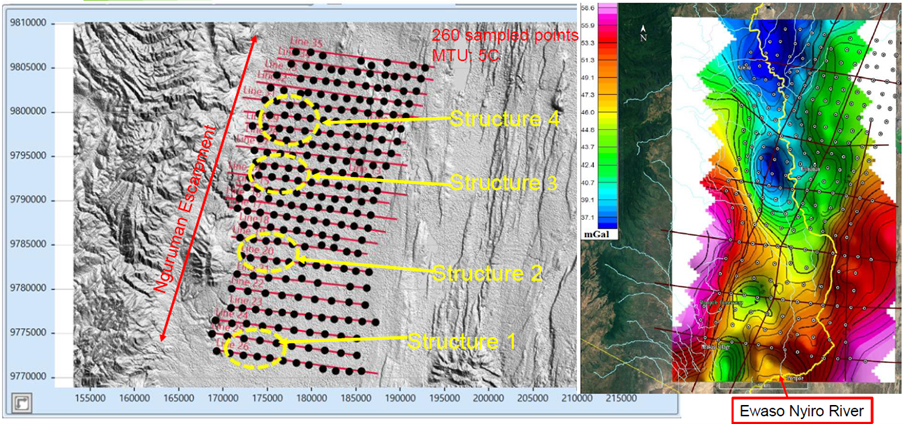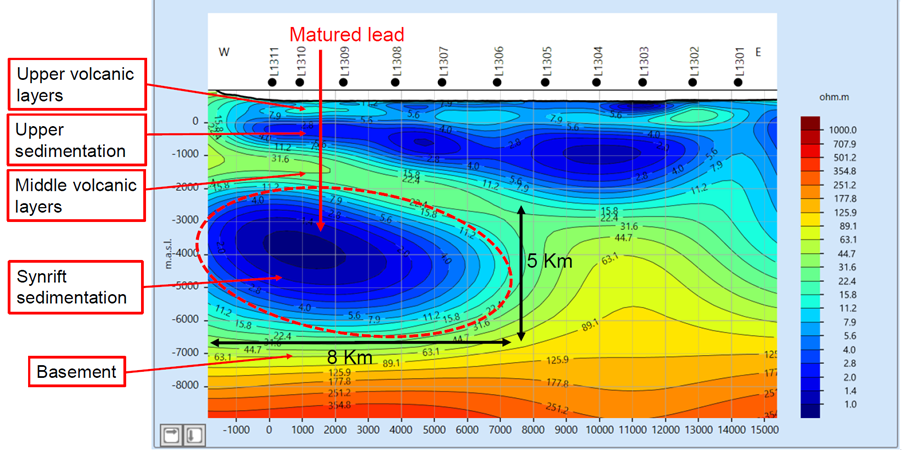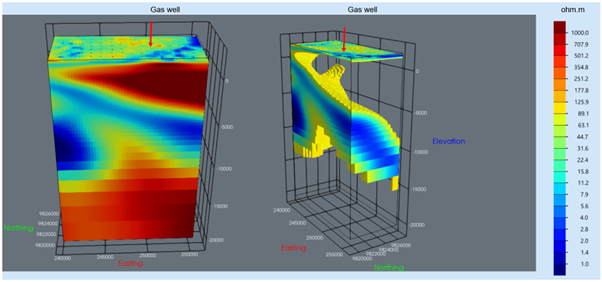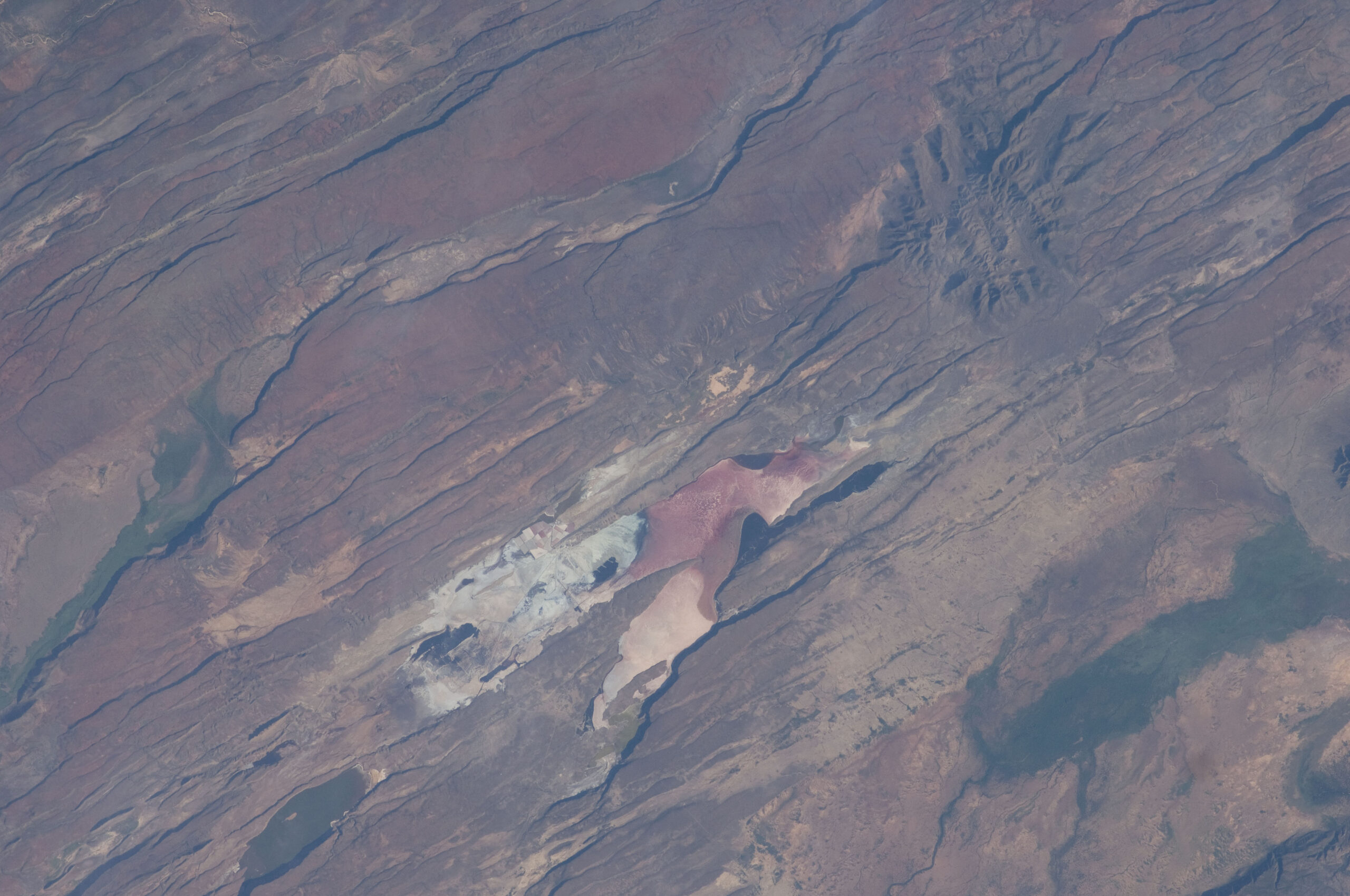By Elisabeth O’Brien
3D magnetotellurics (MT), combined with integrated modelling in Seequent’s Oasis montaj, is helping the National Oil Corporation of Kenya (NOCK) uncover what seismic alone could not. This approach has opened a new chapter in understanding—and potentially developing—Kenya’s rift basin resources.
Overcoming a seismic blind spot
The Magadi Basin in Kenya’s South Tertiary Rift presents a classic challenge for seismic imaging. Thick volcanic basalt layers in the upper crust cause high-velocity wave propagation, scattering energy and masking deeper geological features. This has historically limited the ability to resolve synrift sedimentation patterns—critical for hydrocarbon exploration.

Structural map of Magadi Basin showing MT survey points.
Related content:
A strategic initiative from NOCK
To address this challenge, Chief Geophysicist Dr Godfred Osukuku initiated a multi-method geophysical programme. The team integrated airborne gravity, ground gravity, seismic, and 3D magnetotelluric (MT) data. Oasis montaj was used to visualise and model the basin’s evolution, revealing faulting, sedimentation, and volcanic episodes from the Mid-Miocene to the Early Pleistocene.
”At first, the basin didn’t look promising. But as we integrated more data, the picture changed completely. Now we see a richer, more complex system—and that gives us real optimism.
Dr Godfred OsukukuChief Geophysicist, National Oil Corporation of Kenya (NOCK)
Mapping what seismic couldn’t see
The MT survey covered 260 sampling points across four structural zones. Resistivity data revealed two distinct volcanic layers and a sequence of synrift sediments beneath. This was particularly valuable in areas where seismic data had failed to resolve stratigraphy due to energy decay and scattering. The modelling also revealed basin arching, faulting, and warping consistent with early Tertiary tectonics.

Resistivity model highlighting volcanic layers and synrift sediments.
Quantifying the subsurface potential
To assess the commercial viability of the basin, deterministic modelling was performed for the Oltome-2 lead. The following metrics summarise the hydrocarbon potential:
34.6 MMbbl
Estimated oil volume across three mapped reservoirs (Oltome-2 lead)
TOC: 0.75%
Fair-quality source rock
HI: 105 mg/g
Gas-prone source rock
These figures were derived from surface samples and volumetric calculations using shape factor, porosity, water saturation, formation volume factor (FVF), and recovery factor (RF) parameters. The modelling also identified three reservoir zones with net pay thicknesses of up to 25 metres.
”Seismic imaging alone left too many gaps. By combining gravity, magnetics, and MT, we’ve been able to uncover the basin’s true potential.
Dr. Godfred Osukuku
A mapped gas path—and a clear next step
The team traced a gas migration path and identified a large reservoir requiring appraisal. An exploratory well is planned for next year to confirm commercial viability. The integration of geophysical methods has helped NOCK de-risk the basin and locate optimal drilling targets.
”This integrated approach gives us confidence. We can now identify the right stratigraphy and choose the best location for drilling.
Dr. Godfred Osukuku

Schematic showing gas migration path and reservoir zones.
Why it matters
For NOCK, this project demonstrates how 3D MT and integrated modelling can de-risk exploration in complex rift settings. It’s a blueprint for future hydrocarbon projects in East Africa.





